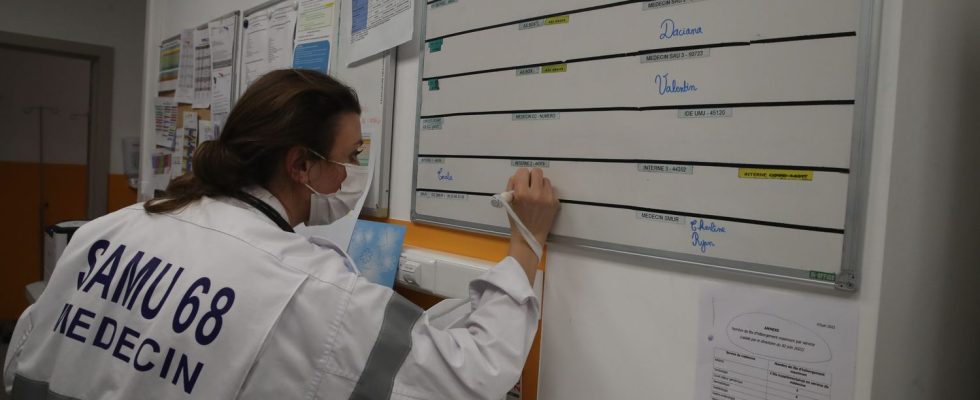“In the unconscious, a woman who presents with chest pain leaves an idea of less seriousness than a man,” explains Xavier Bobbia, professor of emergency medicine and author of a study on the management of patients.
Published
Reading time: 4 min

There is “a background of racism and unconscious sexism linked to our history and our culture” among our caregivers, explained Friday January 12 on franceinfo Xavier Bobbia, professor of emergency medicine at the Montpellier-Nîmes faculty of medicine. He is the author of a study (link in English) which shows that the cases of women and black people are considered less serious, for chest pain, than those of men or white people. The researchers carried out this large study published in the international journal European journal of emergency medicine. 1,500 caregivers from 159 cities in France, Belgium, Switzerland and Monaco took part. “The difference is much greater than we thought”affirmed Xavier Bobbia.
franceinfo: What was the initial idea behind your study?
Xavier Bobba: Caregivers make so-called intuitive diagnoses, which are based on their experience. Having seen 1,000 patients who present with chest pain in their lifetime means that we have rapid diagnoses when we see people. The idea of the study was to try to find out if this intuitive diagnosis was not tainted by our prerequisites and our prejudices.
How did you measure this?
We took photos using artificial intelligence software so that they were standardized. Someone standing, grimacing because he was in pain, who had his hand on his chest. It was either a man or a woman with the four ethnic appearances most commonly found in our country: white, North African, black or Asian. There were eight photos and the clinical case was the same for everyone. What we wanted to know was whether there was a difference in assessing the severity of the same clinical case depending on the photo that was associated.
Are you surprised by the results?
The difference is much greater than we thought. We had help from the French Society of Emergency Medicine because we wanted a lot of answers. It looked like we would need a lot of answering machines. We had more than 1,500 responses to show a difference. In fact, we could have shown a difference with four times fewer responders, because the difference was very marked. In the unconscious, a woman who presents with chest pain leaves an idea of less seriousness than a man. And the same for a black-looking person.
In your opinion, this is not conscious racism or sexism on the part of the healthcare staff?
I am completely convinced of this. In fact, the basic idea of the study was to say that this intuitive diagnosis which is the diagnosis based on our experience, without understanding its parameters, is something that we use every day and which is very powerful. It really allows us to make diagnoses quickly, but it is tainted by something, which is that we have a background of unconscious racism and sexism linked to our history and our culture. In my opinion, we can reproduce this study in all professions.
“Carers are humans like any other. They have a culture and they are part of a society.”
Xavier Bobbia, professor of emergency medicineon franceinfo
How to cure it ?
There are three solutions to this problem. We need to disseminate information and say that we have unconscious preconceptions in our daily lives as caregivers and we need to work on that. We work there in medical studies. We do it from the start. I also do it in emergency medicine to raise awareness. The second step is to make the assessment at emergency reception more objective thanks to the implementation of triage scales which are recommended by the French Society of Emergency Medicine. They allow for a much more objective evaluation. The third in the long term in which I believe a lot is the development of artificial intelligence. We are developing a multicenter study in which we analyze all the data from patients who arrive in the emergency room with chest pain. We will try to see if with “machine learning”, we can predict the less serious severity of our cultural problems.
Could human diagnosis disappear?
No ! The big advantage of artificial intelligence is just that it is more advanced than the triage scale grids. It’s something objective that will guide us. There will always be human control and also human rectification behind it if things do not seem suitable. If you ever have an automatic tool that tells you that the patient in front of you is serious, you will have difficulty saying “I don’t believe it” yourself. It’s more in the other direction where it works well.”
